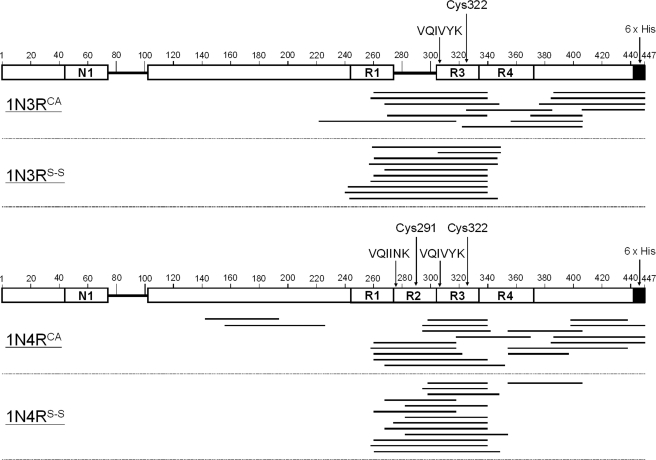FIGURE 3.
Protease-resistant core regions of Tau fibrils. Trypsin treatment of 1N3RCA and 1N3RS-S fibrils (top panel) and 1N4RCA and 1N4RS-S fibrils (bottom panel) produces several peptides, which were identified by MALDI-TOF mass spectrometry (see Fig. S3). The trypsin-resistant regions analyzed from the observed mass peaks (Fig. S3) are shown as bars and mapped on the primary sequence of 1N3R or 1N4R Tau (shown as open bars). Details are also summarized in supplemental Table S1. The numbers indicated above the primary sequence of 1N3R (top panel) or 1N4R (bottom panel) Tau represent the amino residue numbers of the longest Tau isoform. The 1N3R isoform (shown in the top panel) lacks the R2 region (near positions 280–300), and the N-terminal region (near positions 80–100) is also absent in both 1N3R and 1N4R isoforms. The positions of hexapeptide motifs, VQIINK and VQIVYK, as well as two Cys residues are also indicated.

